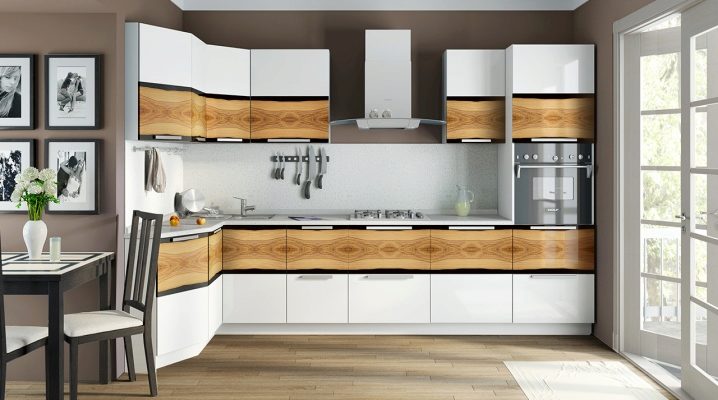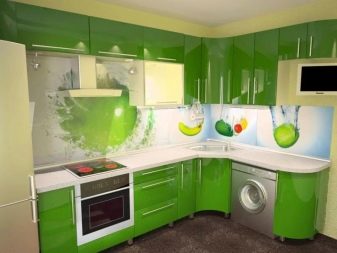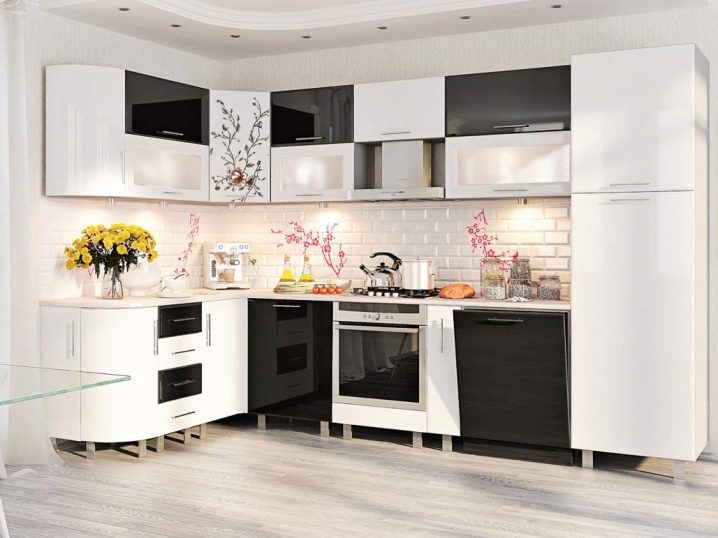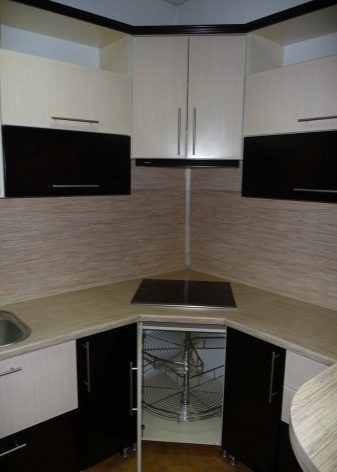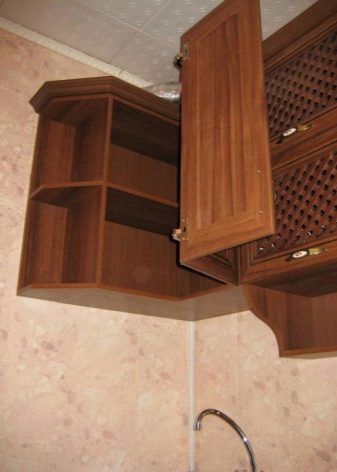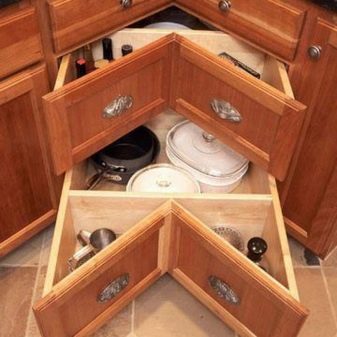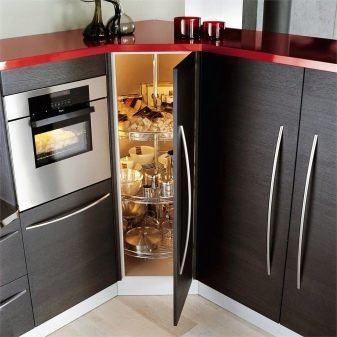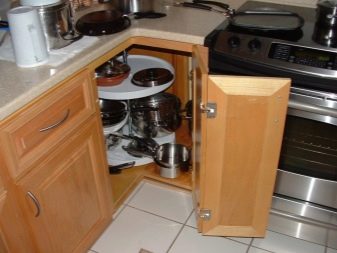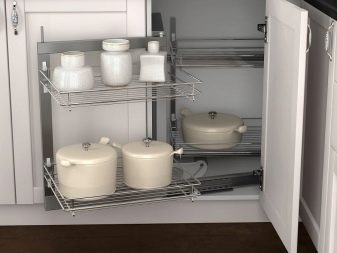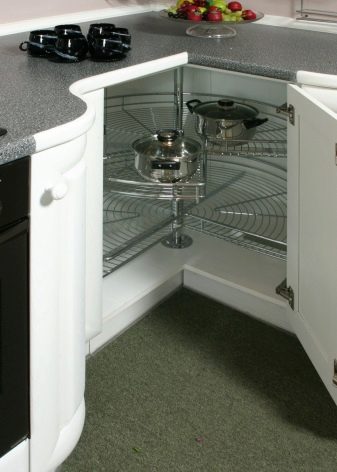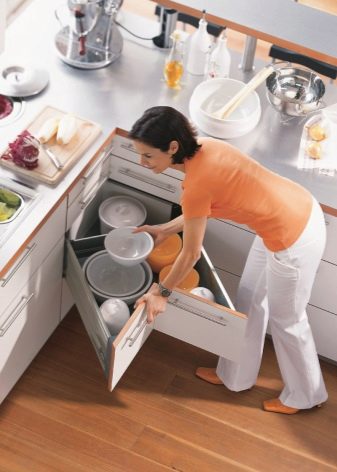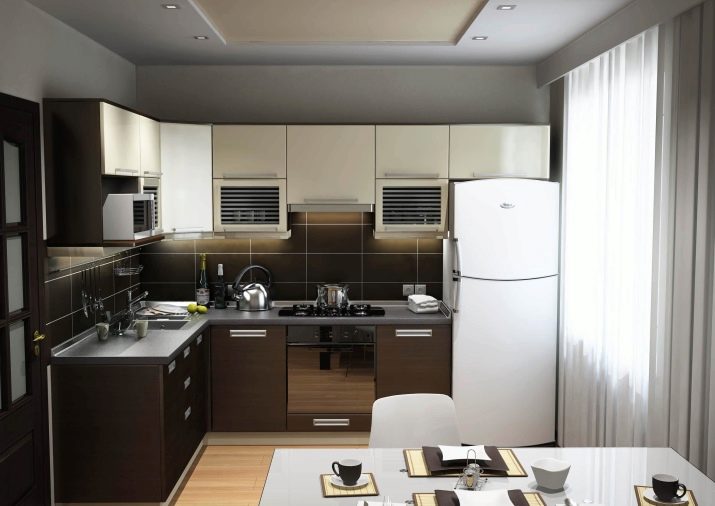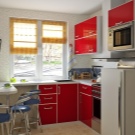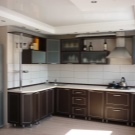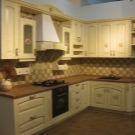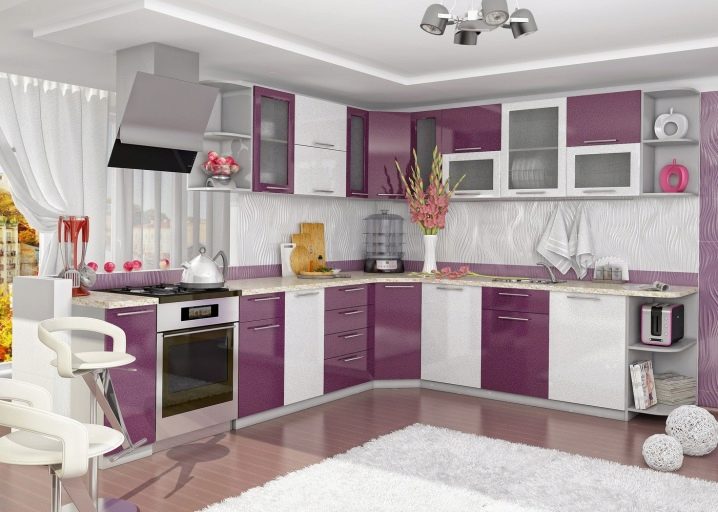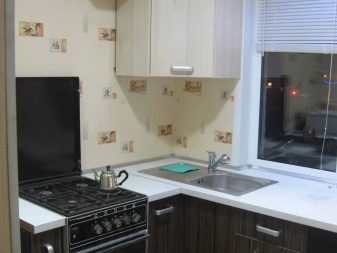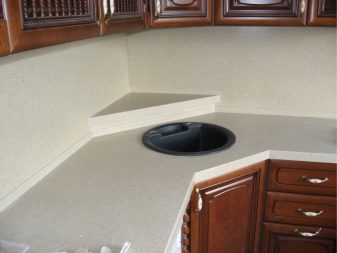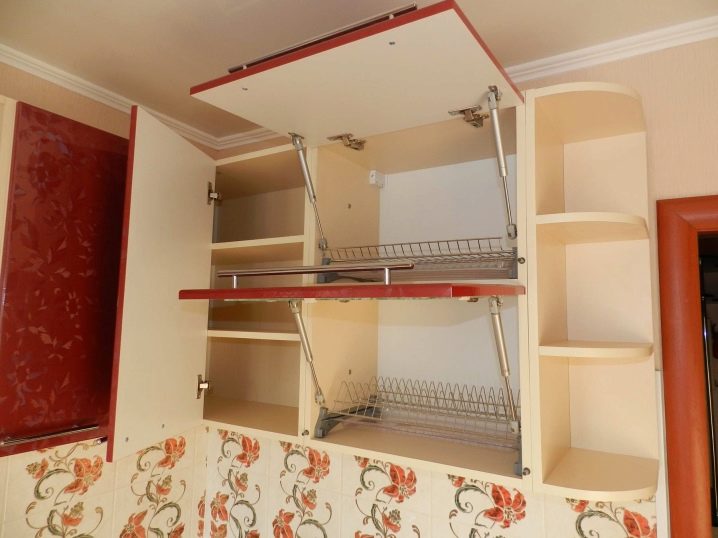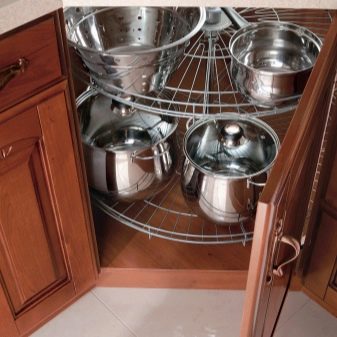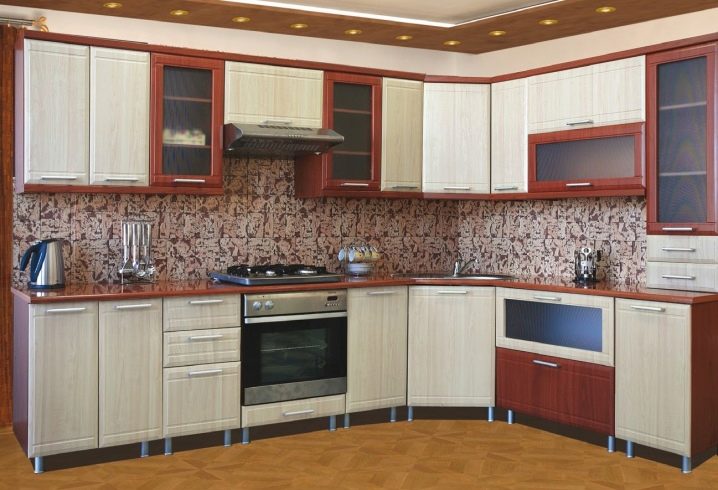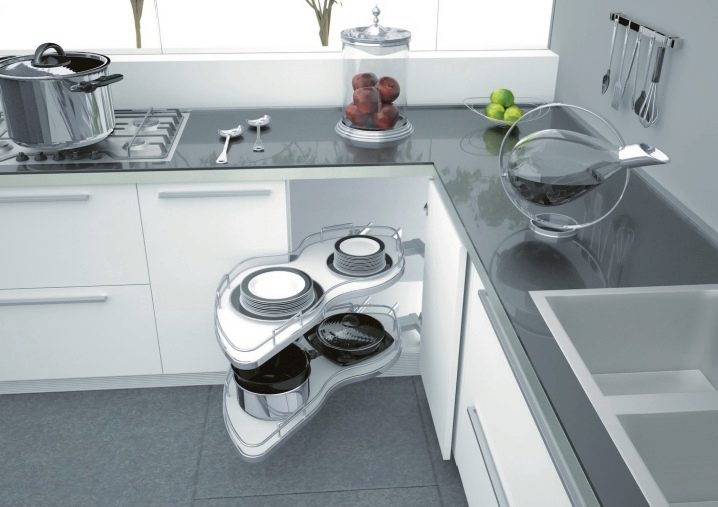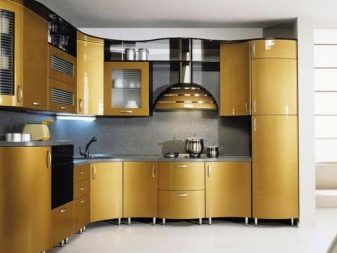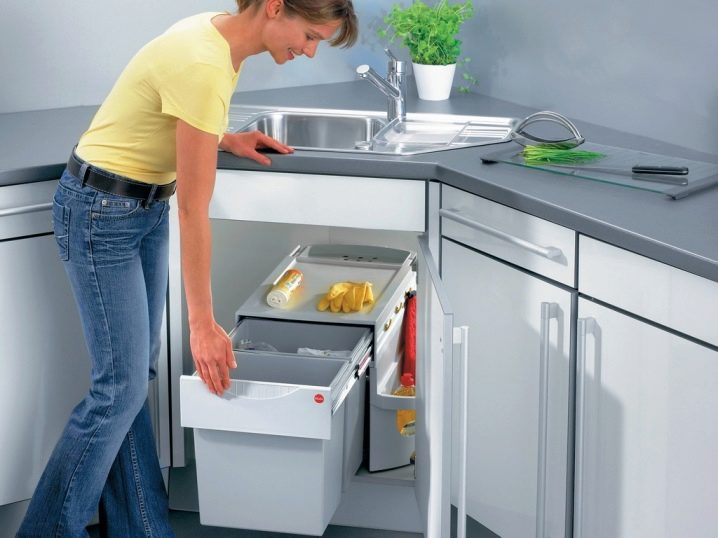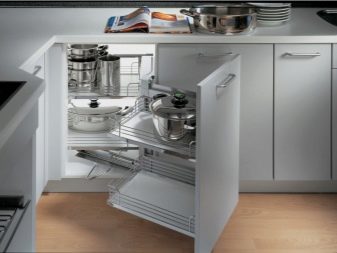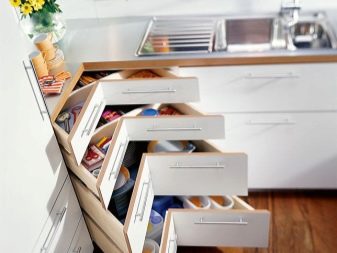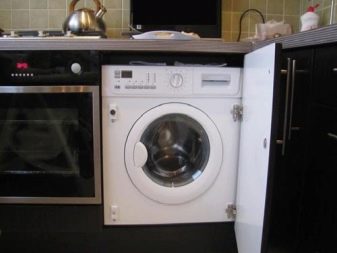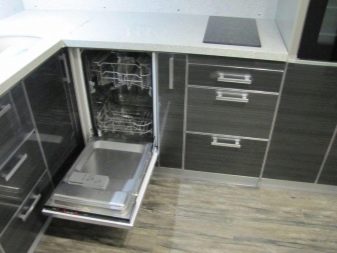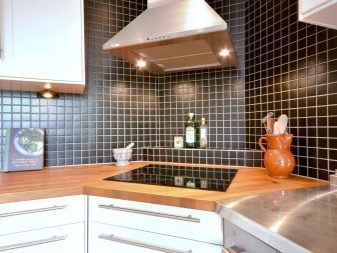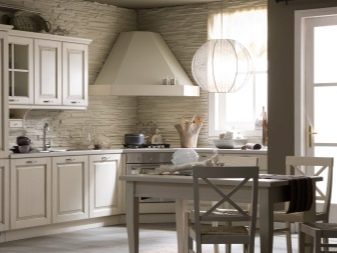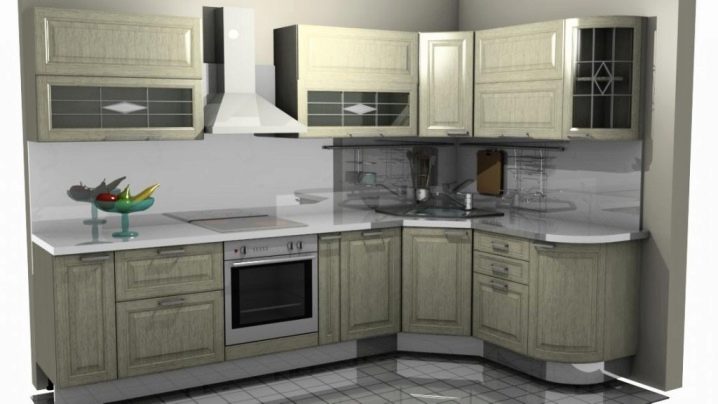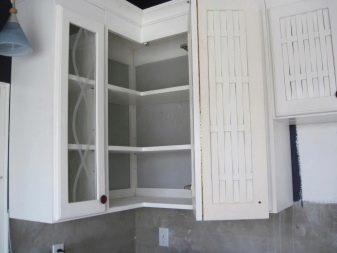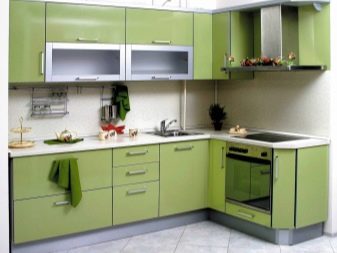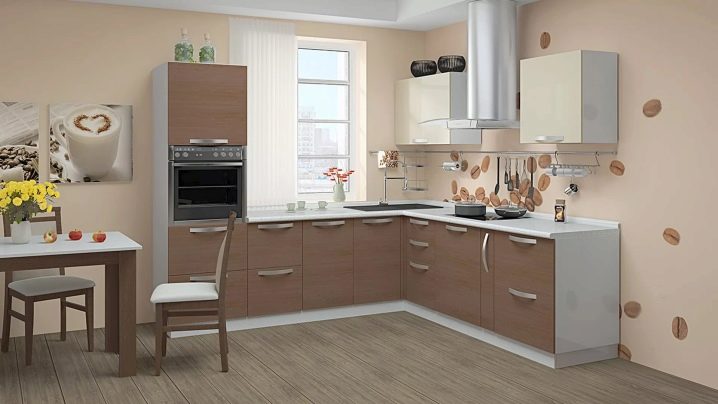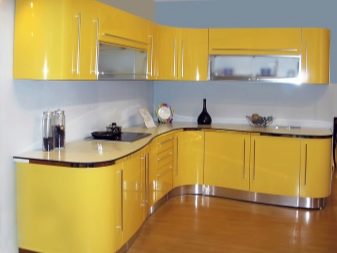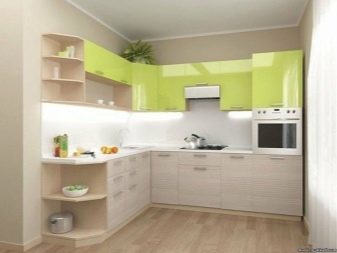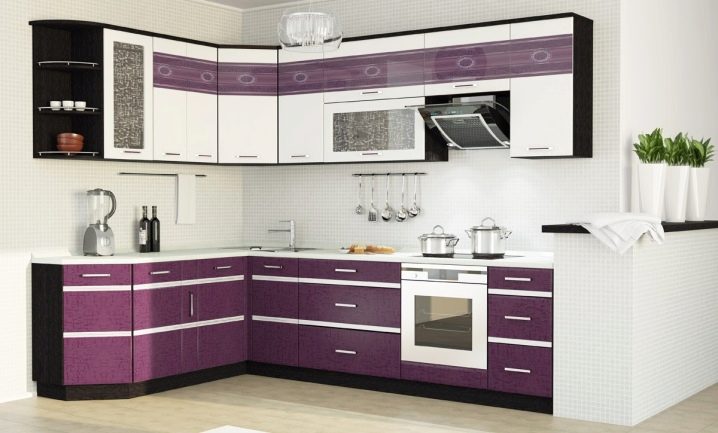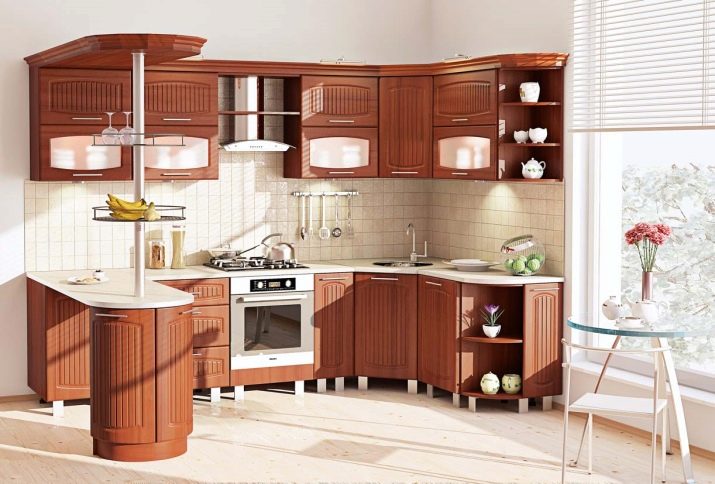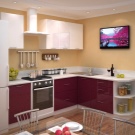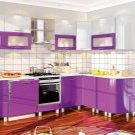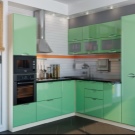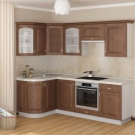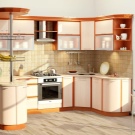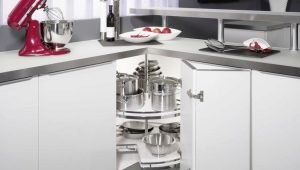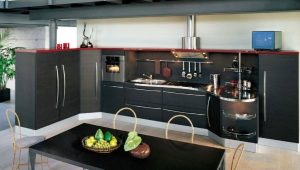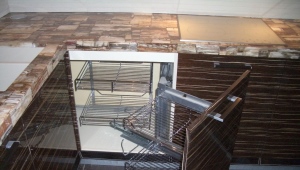Sizes of the corner kitchen cabinet
The corner module in the kitchen set is one of the most functional types, and determining its correct size for a particular type of kitchen allows you to solve the problem with the storage of kitchen utensils and the location of the cooking zone. This article will focus on the upper and lower corner modules for the kitchen, since each of them carries a different semantic and functional load and has features in installation.
If the kitchen project provides for the presence of angular structures, then the development of the model of the future kitchen begins with the placement of the lower kitchen cabinet and the upper corner module, regardless of the rest of the headset cells. By the way, the assembly and installation of the kitchen begins with the same corner tables headset - a mirror image of each other.
Features of angular modules
- Corner structures allow us to use a corner in the "work" of the kitchen - a zone, on the one hand, useless, and on the other - a very small square, which is very important for the kitchen.Traditionally, on the scale of a small kitchen, designers try to use each centimeter of free space wisely, to use corners in this case is an extremely correct decision.
Depending on their configuration, they place dishes, kitchen utensils, foodstuffs and even small-sized appliances in corner cabinets of the upper level. The lower modules of an angular nature are often used for household needs, but the most skilled craftsmen turn this inaccessible area into a niche for appliances like a dishwasher or a washing machine.
- Externally, the angular modules look concisely, having a spacious internal space, which is filled by the power of each hostess.
- Corner cabinet allows you to efficiently use the angle and save on the purchase of two rectangular cabinets.
- The design of the corner cabinet (it does not matter, lower or upper) is so thought out that it allows you to open any module with a simple movement of the hand.
Size selection
To create an individual sketch of the kitchen, or its headset, the dimensions of the room, the location of a set of modules are taken into account, therefore the development of a future kitchen model is a purely individual task.
Consider the advice of experts to determine the size of the corner modules for the kitchen - the lower and upper cabinets:
- The optimal choice of the depth of the wall cabinet will be a size of 30-35 cm, this indicator does not affect the width and height of the structure and allows you to combine it with a docking module of various sizes.
- As a rule, the lower corner module is occupied by a sink, so when choosing its size (especially the width of the cabinet), it is worth taking care that the dimensions of the sink “fit” into this very cabinet. Accordingly, the width of the cabinet should be greater than the width of the sink (at 5-8 cm minimum).
- The top module is designed for dishes in the traditional formats of corner kitchens, when the bottom - washing. Make sure that the doors of the wall cabinet are conveniently opened and do not interfere with the opening or closing of each other.
- The inner filling of the corner modules is a purely individual matter; To make the lower cabinet more functional, choose its trapezoidal shape, by the way, the upper cabinet in the “trapezoid” format is also more functional, but it is unlikely to be suitable for storing dishes.
- The standard dimensions of the mounted corner module are determined by the size of 600x600 mm, while the cabinet depth often does not exceed 300 mm.The lower corner module has the same width of 600 mm, but its height is different and is often 750 mm.
- The dimensions of any corner designs are individual, they are taken into account in accordance with the type of kitchen and the size of the future headset. Ready-made headsets are available in standard sizes with a width of 450 mm, 500 mm, 600 mm, 700 mm, 900 mm, while custom-made kitchen furniture is made according to the original dimensions.
- When choosing the size of the upper and floor cabinets, observe their mirror-like properties - the width of both cabinets should be the same for a laconic appearance and provided that the kitchen space allows you to create such a set.
Lower
The bottom module is used as follows:
- It is installed kitchen sink, so the bottom space of a similar design is often used only for storing the trash can and other household accessories. The fact is that the main place in the lower cabinet is occupied by the pipeline, leaving little space for imagination.
- Functional wardrobe with drawers - an excellent option, but expensive. Cabinet-trapezium is well suited for storing kitchen utensils and spices due to the filling retractable design with spacious shelves.The simplest option would be to place simple drawers in a trapezoidal cabinet.
- An alternative option to use the corner bottom module would be to place a narrow dishwasher or washing machine in it.
- It is possible to install a hob in the corner space of the module; This method is suitable for large kitchens, since the placement is not quite rational and "steals" a lot of kitchen space.
Upper
Traditionally, the upper module is made in the mirror reflection of the lower one - their sizes coincide and constitute 600x600 mm almost always - this is the standard width and height of the structure. The right corner of the upper corner cabinet is traditionally in contact with the wall of the adjacent cabinet, so when developing a design project you should take care of convenient opening and closing of the wall cabinet.
In the upper cabinet is usually located dishes (if it is located above the sink), there are cases of its use as storage for food and spices.
Kinds
There are two types of corner modules: straight (junction 90 degrees), or standard, and trapezoidal with a junction of 45 degrees.
An outdoor corner cabinet fits in with the next - an example of a direct module view; An alternative to it could be the “accordion” design, when visually the two cabinets are a single whole. The standard size of the tabletop is 600x600 mm, but there are models of 600x420 mm.
The second type of the lower or upper corner module is called trapezoidal with straight or radius facades. The most common is the size of the 400 mm wide trapeze façade: it is unlikely to make it bigger, smaller - the cabinet functionality is lost. The main advantage of such a module in the form of a trapezoid is its capacity even under the condition that the pipeline takes up most of the internal filling. An alternative would be the use of sliding structures or drawers - the choice depends on the wishes and capabilities of the customer.
Kitchen planning requires careful approach and advice of experienced professionals; Do not skimp on the creation of an individual design project of the future kitchen in order to ensure its maximum functionality. Corner structures of floor and wall cabinets will allow you to use the kitchen space and use it, which the hostess will undoubtedly appreciate.
Ordering a kitchen set with corner modules allows you to get the kitchen of your dreams from true professionals, let the masters “assemble” your kitchen by yourself so that the set looks complete and according to the approved project. Do not skimp on the work of the masters, in return for which you will receive a functional and “working” kitchen with corner structures, which, when assembled, are sometimes capricious.
